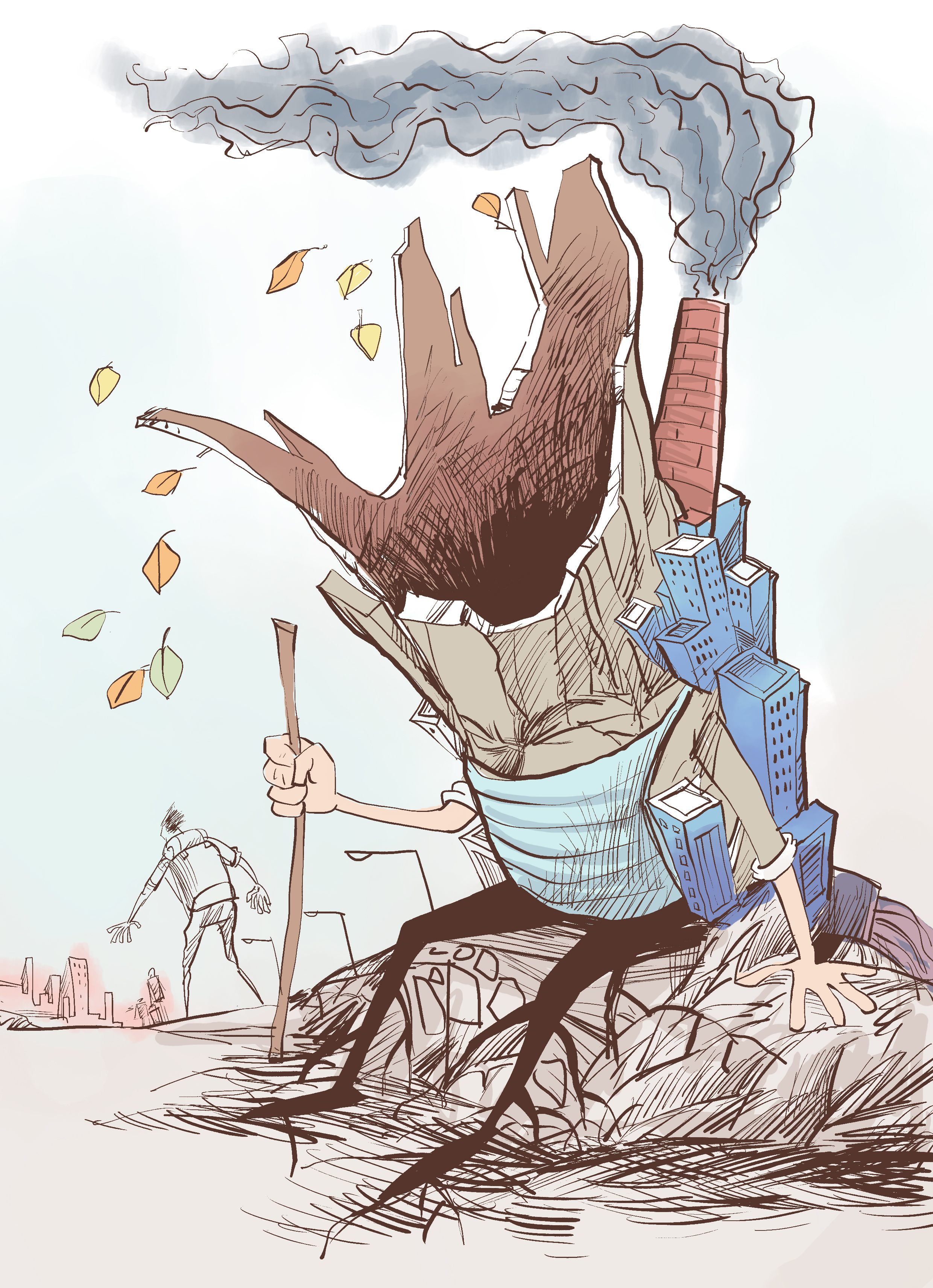China’s small cities face big-city problems

Small cities, big problems
Cartoon by Gou Ben; Poem by Long Yuan
Resources are being depleted;
Exhaustion from development unimpeded.
The dry tree stands still with no vitality.
Great minds flee for a larger municipality.
Industries are inefficient and weak,
While the nepotistic labor market
Makes employment prospects bleak.
Traffic is bad, with cars everywhere.
Industry belches smoke into the air.
Cities big and small—
Urban problems affect them all.
But with a modern approach,
Policymakers can
Formulate a better plan.
Building the capacity of China’s small cities and towns raises the living standard in the new model of urbanization and sustainable development. The role cities play in building a moderately prosperous society and promoting modernization was highlighted during the nation’s Central Urban Work Conference last year. Small cities share some problems with big cities, while others are specific to less densely populated urban areas.
Zhao Hui, chief economist of China’s Ministry of Housing and Urban-Rural Development, said that industries are the fundamental driving forces for development. The example of model towns in China has proved that towns supported by well-developed industries can maintain sustainable development while the towns without a pillar industries often become “ghost town.”
It is essential to develop industries with local characteristics, said Tong Zhongxian, director of the Center for Urban Development Studies at Academy of Social Sciences of Hunan Province. In practice, the economic development of many small cities does not reflect local characteristics, and some of them are highly dependent on natural resources, which will be problematic once those resources are depleted, he said.
The roads of Meitanba Town of Ningxiang County, Hunan Province, once called “the coal capital of Central Hunan Province,” was once crowded with coal trucks during the high tide of the coal market, leading to population growth and prosperity on a local level. “With 50,000 people living here at its peak, this town was once more prosperous even than many counties. Some large-scale coal enterprises even have their own hotels, clubs, schools for workers’ children and hospitals.” said Wang Chunlin, party secretary of Meitanba Town.
In recent years, the price of coal has dropped and the supply has nearly been depleted in the town. Forced by the industrial policies and the ecological environment crisis, local coal enterprises have retreated from the town. Lacking alternative industries, Meitanba Town, once fueled by a thriving coal industry, is now stagnant.
Although the government has been promoting urbanization across the nation and improving urban-rural integration, the development of infrastructure in many small cities lags behind. Teachers and students move to bigger cities and towns in search of better schools, weakening the education systems in some small cities and towns. “Most parents with moderate wealth have sent their children to the big cities nearby,” said an owner of a small supermarket in a county in central Hunan Province.
Another common complaint for residents in many small cities is the shortage of cultural and entertainment facilities. “In terms of cultural resources, big cities are on the top of the pyramid, and the smaller the cities are, the fewer resources they receive,” Tong said. They are without the cafes, bars and bookstores that are the staples of urban life, let alone art galleries, museums and art salons, Tong said.
It cannot be ignored that some problems of cities are now increasingly being seen in small cities.
A deputy head of a county said most of the new industrial projects have been placed near the county, benefitting the local economy while adversely affecting the environment.
A full-scale sewage system is within the reach of only a few affluent towns, and sewage produced in other small towns drains directly into natural waters.
The system of garbage collection and processing in some densely populated towns far away from central counties is primitive due to the high cost and long distance to transport and process in counties. To simply burn or bury the garbage has caused pollution on the soil, air and water, said Dai Hairong, a local specialist on city planning in Shimen County, Hunan Province.
In addition to pollution, traffic jams are increasingly common phenomena in many small cities. Roads in small cities are frequently gridlocked because the number of private cars in these cities are increasing. Traffic jam is no longer a problem that only big cities afflicts.
